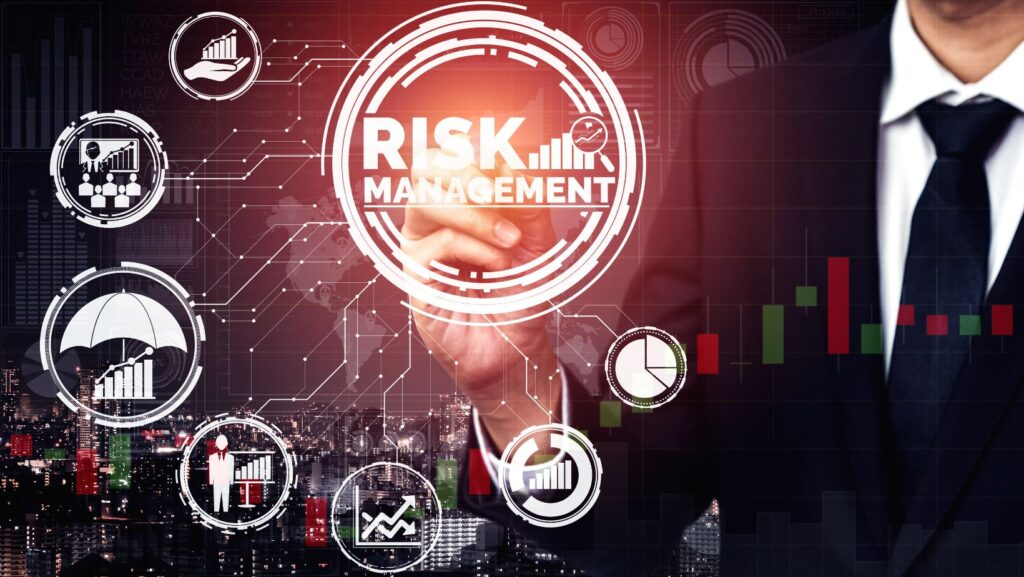

Third-Party Risk Management (TPRM) is a crucial framework that companies use to identify and mitigate risks associated with their vendors, suppliers, and business partners. In today’s interconnected business environment, a third party’s failure can have immediate and severe impacts on a company’s operations, financial health, and reputation. TPRM aims to safeguard organizations by ensuring that the third parties they depend on are secure, reliable, and compliant with relevant regulations.
AI-driven Vendor Risk Analysis
Automating Data Collection
One of the most time-consuming aspects of vendor risk management is the collection of relevant data from diverse sources. AI simplifies this task by using AI to streamline TPRM processes. Automated systems can gather data from public records, third-party databases, and internal documents swiftly and accurately. Automation reduces the workload on human analysts and speeds up the decision-making process, allowing for more rapid assessments and updates.
Identifying Red Flags
AI systems are particularly adept at identifying red flags across various risk categories, including cybersecurity, financial health, and compliance with regulations. These AI TPRM risk solutions are equipped to detect anomalies and patterns that might indicate risk, such as unusual transaction activities or breaches in cybersecurity protocols. Early detection is crucial for mitigating risks that could severely impact a company’s financial standing and reputation.
Real-Time Risk Profiling
The dynamic capabilities of AI extend to real-time risk profiling, which allows for faster and more accurate assessments. This immediate processing not only speeds up the evaluation cycle but also enhances the quality of the assessments. With AI’s impact on third-party risk mitigation, changes in a vendor’s profile are updated instantly, providing businesses with current information to make informed decisions. Real-time data is crucial for maintaining an up-to-date view of third-party risks and adjusting strategies accordingly.
Continuous Monitoring and Proactive Risk Mitigation with AI
Monitor Vendor Performance
AI technologies enable continuous monitoring of vendor performance by analyzing transactional data, compliance reports, and performance benchmarks in real-time. This capability allows organizations to detect deviations from expected performance standards promptly. Additionally, AI tools assess external factors, such as market shifts or regulatory changes, that could affect vendor reliability.
How AI Alerts Organizations
It also revolutionizes how businesses anticipate and respond to threats by identifying potential risks as they emerge. Here’s how AI actively alerts organizations to these risks:

- Pattern Recognition: AI systems are instrumental in scrutinizing vast amounts of historical data to discern patterns that may indicate potential risks. This capability is not just about identifying what has happened but projecting what could happen, enabling organizations to take preemptive measures. By understanding these patterns, businesses can tailor their strategies to avert possible dangers, thus securing their operations against foreseeable challenges.
- Anomaly Detection: One of the most valuable applications of AI in risk management is its ability to monitor ongoing operations and swiftly identify deviations from the norm. These anomalies could range from slight discrepancies in financial transactions to irregular vendor behavior that could signal fraud or contractual breaches. The early detection of such irregularities empowers organizations to quickly address these issues, minimizing potential damages and maintaining operational integrity.
- Predictive Analytics: Predictive analytics provide businesses with a temporal advantage—knowing what might happen next. This foresight equips organizations with the necessary information to formulate effective response strategies, allocate resources more efficiently, and bolster their defenses against potential threats. The predictive power of AI extends beyond mere risk anticipation; it also enhances the organization’s resilience by ensuring preparedness for a variety of scenarios.
- Sentiment Analysis: Through sentiment analysis, AI tools evaluate public communications, including social media posts and news articles, to assess public sentiment and the tone surrounding various topics. This analysis helps organizations measure the potential impact of public perception on their operations, especially concerning vendor relations and stability. Understanding shifts in sentiment can alert companies to brewing issues that could affect their brand reputation or lead to disruptions in their supply chain. It is particularly useful for managing and mitigating risks in a world where information spreads rapidly, and public opinion can significantly influence market dynamics.
The integration of AI in monitoring systems not only speeds up the detection of risks but also enhances the accuracy of these detections, ensuring that organizations can trust the reliability of their third-party engagements.
Adapting to Changes
By enhancing TPRM with AI, organizations can adjust their risk management strategies in real-time. AI tools continuously scan for changes in regulations and market trends, ensuring that compliance and strategic responses are as current as possible. A proactive approach helps companies stay ahead of potential issues that could affect their operations and third-party relationships.
Enhancing TPRM with AI
Reducing Human Error
Because AI technology constantly applies the same criteria to evaluate all data, it dramatically decreases the likelihood of human error in vendor assessments. Uniformity ensures that assessments are not only accurate but also unbiased. AI’s capacity to process information rapidly and with precision means that decisions based on these assessments are reliable and reflective of actual risk levels, making AI-powered vendor assessments a cornerstone of modern risk management strategies.
Enhancing Consistency and Reliability
Consistency and reliability in risk evaluations are critical for maintaining trust and stability in business operations. AI enhances these aspects by providing standardized methodologies for analyzing risk across all vendors. Standardization ensures that each assessment is thorough and adheres to established risk management protocols, thus maintaining high standards of quality and reliability in the evaluations.
Integrating AI for TPRM
Integrating AI with TPRM software transforms traditional risk management frameworks into dynamic, responsive systems capable of adapting to new challenges and complexities. Here’s a look at how this integration facilitates seamless operations:
- Data Synchronization: AI ensures that all data across the TPRM platform is synchronized in real-time, providing a unified view of all vendor information and risk assessments.
- Workflow Automation: By automating workflows, AI eliminates manual bottlenecks, speeding up the risk management process and ensuring that no critical steps are missed or delayed.
- Decision Support Systems: AI algorithms assist in making informed decisions by analyzing vast amounts of data and presenting actionable insights, which are crucial for managing risks effectively.
- Enhanced Communication: AI integration helps streamline communication channels within the TPRM operating system, ensuring that all stakeholders have access to up-to-date information and can collaborate more effectively.

This seamless integration of AI with existing TPRM tools not only optimizes risk management processes but also empowers organizations to anticipate and mitigate potential risks more effectively, safeguarding their operational integrity and enhancing strategic decision-making.
Benefits of AI-Powered TPRM Solutions
Company Reputation and Legal Exposure
One critical advantage of AI tools for TPRM is their role in protecting a company’s reputation and minimizing legal risks. By ensuring thorough and consistent risk assessments, AI helps prevent associations with unreliable or unethical vendors, which can harm a company’s standing with customers and regulators. Moreover, AI’s capabilities in ensuring compliance with various regulatory requirements reduce the likelihood of legal issues that could arise from non-compliance, further safeguarding the company.
Building a Scalable and Adaptive Framework
These systems are not only robust but also highly scalable and adaptive. They can adjust to the growing number and complexity of third-party risk mitigation as businesses expand. Scalability ensures that the risk management framework grows in tandem with the company, maintaining effectiveness regardless of size or sector. AI’s adaptability means it can quickly adjust to new regulatory landscapes or market conditions, keeping the company’s risk management strategies aligned with current realities.
AI is poised to further influence risk management strategies with its evolving capabilities. As machine learning algorithms become more sophisticated, they will offer even deeper insights into risk patterns and potential vulnerabilities. This progression will likely lead to more predictive and adaptive risk management models that can better anticipate and mitigate risks before they impact business operations.












